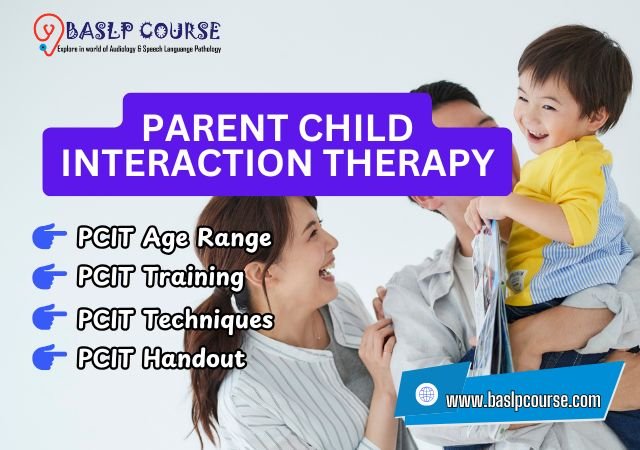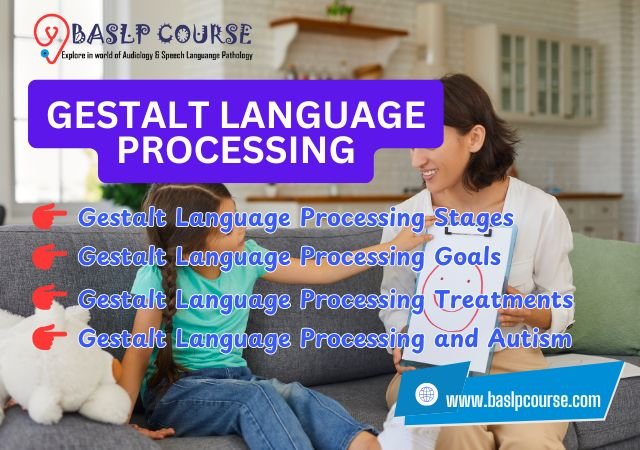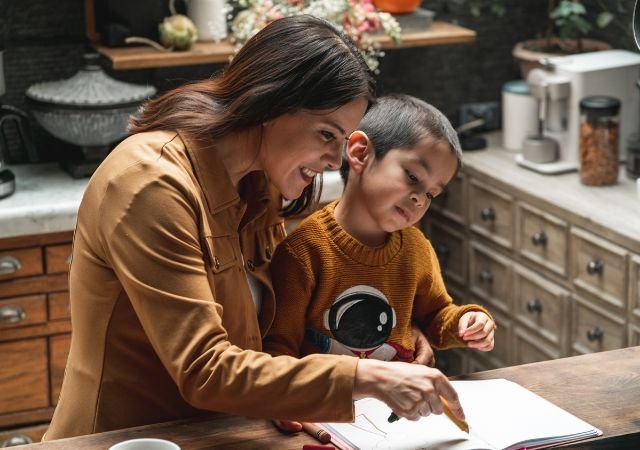Parent Child Interaction Therapy (PCIT): Age Range and Training: Managing a child’s behavior or speech challenges can feel overwhelming for parents and therapists alike. Studies show up to 10–15% of young children exhibit disruptive behaviors (tantrums, defiance, aggression). Likewise, about 5% of preschoolers stutter. These problems often co-occur with communication delays and family stress.
Parent-Child Interaction Therapy (PCIT) is an evidence-based approach that equips caregivers with simple, powerful strategies to improve interactions and reduce problems. In PCIT, parents learn to give focused attention and consistent guidance in fun play-based sessions, effectively becoming their child’s “coach.” This post will explain what PCIT is, its ideal age range, core techniques and activities, and what’s involved in PCIT training – delivering practical insights backed by experts and research. By the end, you’ll see why PCIT is trusted by psychologists, therapists, and pediatric specialists to bring positive change in families.

What is Parent Child Interaction Therapy (PCIT)?
Parent-Child Interaction Therapy (PCIT) is a dyadic play therapy for young children and their caregivers, aimed at strengthening relationships and reducing behavior or communication problems. In practice, a therapist coaches a parent (through a one-way mirror or bug-in-ear device) as the child plays, teaching the parent to use specific positive skills. PCIT’s two phases – Child-Directed Interaction (CDI) and Parent-Directed Interaction (PDI) – focus first on warm, play-based attention (CDI) and then on clear instruction-follow-through (PDI).
Child-Directed Interaction (CDI)
In the CDI phase, the parent follows the child’s lead in play, using the PRIDE skills: Praise, Reflect, Imitate, Describe, and express Enjoyment.
For example, a parent might say, “I love how you stacked those blocks” (Praise), or “The car is red” (Describe), and mirror the child’s play. The parent avoids giving commands or asking questions at this stage, simply showing positive, responsive interest. This builds the child’s confidence and positive play; one analogy is that CDI teaches the parent to become the child’s enthusiastic play-partner instead of a critic or boss.
Parent-Directed Interaction (PDI)
In the PDI phase, the focus shifts to encouraging compliance with clear one-step commands and consistent consequences. The parent learns to give calm instructions (e.g., “Please put the toy in the box”) and use planned time-outs if needed, all while maintaining a supportive tone. PCIT is distinguished from general parenting by this live coaching: a therapist guides the parent in real time, so parents learn by doing under supervision. The evidence shows this approach works: multiple reviews confirm that PCIT significantly reduces disruptive behaviors and parenting stress. In short, PCIT is “active” therapy – not lecture or advice, but hands-on practice – that transforms parent-child interactions in measurable ways.
Development of PCIT
PCIT was originally developed by Dr. Sheila Eyberg for young children with oppositional behaviors. Today, it’s considered evidence-based and is effective for a range of issues. For example, Dr. Vivyan notes PCIT works “especially well for children ages 2 to 7” with problems like ADHD, ODD, separation anxiety, and even PTSD or autism spectrum conditions. Importantly, the therapy strengthens attachment and positive communication, which can help children feel more secure and cooperative. (Brief anecdote: a mom we know struggled daily with her 4-year-old’s tantrums. After learning to “catch good moments” with praise and ignoring minor misbehavior during play, she said, “It’s like night and day – he’s calmer and even talks more.”) This first-hand change of heart and behavior is exactly what PCIT aims to create.
Parent Child Interaction Therapy (PCIT) Age Range
PCIT is designed for young children, typically toddlers and preschoolers. Standard PCIT programs target ages 2 through 7 years. The reason is twofold: this is the window when challenging behaviors often emerge (and when children are very responsive to parent guidance), and it’s before maladaptive patterns become entrenched. In practical terms, PCIT is ideal for preschoolers and early school-age kids because they love to play, making the play-based therapy a natural fit.
Importantly, PCIT can sometimes be extended a bit beyond 7 if a child’s vocabulary or developmental level is around that age, but research confirms the strongest evidence is with 2–7 year olds. For example, CEBC notes PCIT targets ages 2.0–7.0 (and families with externalizing behaviors). When therapists refer to “age range,” they mean the age of the child client. (Parents of even older children might take principles from PCIT on board, but typically PCIT is not used as a formal program past age 7 or 8.)
Why start early?
Because younger brains are highly adaptable, and children learn rapidly through play. By engaging children during free play (like making a game out of cleanup or shared construction play), PCIT helps small kids practice following directions and interacting positively in a supportive setting. In effect, we “rewire” behavior patterns early – for example, replacing a habit of screaming for attention with a habit of joyful eye contact and shared fun. This early intervention often prevents problems from spiraling into more serious issues later on.
Key Point
PCIT is not typically used for older school-age kids or teens. Other therapies better suit older children. But for children roughly 2 to 7 (toddler to early elementary), PCIT is a top-tier, research-backed choice. (For comparison, note that the specialized Palin-PCIT for stuttering also focuses on kids under 7, as we’ll discuss below.)
Parent-Child Interaction Therapy Techniques & Activities
Now let’s delve into the practical techniques and activities parents use in PCIT. These are the tools parents learn and practice in therapy sessions to change everyday parent-child interactions.
PRIDE Skills (CDI)
During Child-Directed Interaction, parents use the PRIDE skills consistently. In simple terms:
- Praise: Give labeled praise (e.g., “I love how you’re drawing a big square!”) for any positive or safe behavior. This tells the child exactly what you appreciate.
- Reflect: Repeat or paraphrase what your child said. If the child says, “car vroom!”, the parent says, “Yes, the car is going vroom!” Reflecting shows you listen and validates the child’s speech.
- Imitate: Copy the child’s play or speech (if appropriate). For instance, if the child builds a block tower, you do the same in your play. This deepens the connection.
- Describe: Narrate the child’s activity (“You are stacking the yellow block!”). It’s like being a friendly commentator.
- Enjoyment: Use an enthusiastic tone and body language (smile, cuddle, clap) to show you’re having fun. Enthusiasm itself communicates approval.
This “hands-off” but highly attentive style feels like giving the child the lead role. It’s like an “all-star spectator” – the parent’s job is to cheer the child on. PCIT therapists often use metaphors: for example, “Be the cheerleader, not the boss.” Parents might be coached by a therapist whispering suggestions (e.g., “He cleaned up a toy – praise!”).
Directed Play/Commands (PDI)
Once the child is happily engaged, the second phase, Parent-Directed Interaction, introduces clear limits and compliance training. A parent might ask the child to do a simple task like “Please put the truck away”. If the child resists or disobeys, the parent calmly implements a brief, consistent time-out (guided by protocol), then re-engages.
The key is to give clear, direct instructions one at a time and follow through every time. Many PCIT programs use fun “games” to practice this – for example, a clean-up game where the child puts away a set of toys on command, or “Simon Says”-style instructions.
Playful Activities
Because PCIT is play-based, therapists often supply a variety of toys. Common activities include building blocks, dolls or action figures, art supplies, and pretend-play sets. These allow a wide range of child-led play. In CDI, parents might play parallel to the child (if the child is a builder, the parent builds their own tower). In PDI, the therapist might suggest structured games like “Red Light, Green Light” or “Mother May I” to practice listening.
Behavior Coaching
Throughout, therapists coach parents on how to handle disruptions. For instance, if the child throws a tantrum, the parent is taught to remain calm and to consistently say, “We use kind words in this room,” and possibly end play briefly. Over time, the child learns that negative behaviors result in predictable, non-escalating consequences. Meanwhile, every time the child behaves well, the parent showers positive attention (via PRIDE) as soon as possible.
What does a PCIT session feel like?
It often looks like a normal parent-child play session, except the therapist may whisper tips to the parent. Parents leave each session with “homework” – not pages of reading, but a plan to use the PRIDE skills or to practice a particular game with their child that week. For example, a handout might suggest “This week: play ‘Tea Party’ and practice waiting turns”. (PCIT programs typically provide simple worksheets or “cheat sheets” listing do’s and don’ts, which parents use during practice.) The focus is always on making sure the child feels heard and the parent stays positive even under stress.
Several studies confirm these techniques help: for example, children in PCIT show big drops in tantrums and noncompliance, while parents report greater attachment and confidence. In one review, therapists observed children smiling and cooing more during play after just a few weeks of PCIT. In short, PCIT replaces yelling and scolding cycles with games, praise, and clear expectations. Over time, this makes playtime (and daily routines) smoother and more enjoyable for everyone.
PCIT Therapy Training & Certification
Becoming a certified PCIT therapist involves formal training beyond just graduate school. Why training matters: PCIT is a manualized, evidence-based protocol. Trainers want to ensure fidelity to the method, so parents get the proven benefits. Typically, training includes:
- Workshops: An initial PCIT training workshop (often 2–5 days) covering theory and practice of CDI and PDI. There are official PCIT workshops offered by either the PCIT International Association or PCIT, Inc. (the two main organizations). These workshops may be live in-person or live online. Trainers present videos, role-plays, and hands-on practice of PRIDE skills.
- Supervised Practice: After the workshop, therapists enter a consultation phase (often 1 year). During this time, they treat at least two families from start to graduation under consultation. They participate in regular (e.g., monthly) consultation calls with PCIT experts to review videoed sessions and get feedback. This ensures the therapist can apply PCIT correctly in real cases.
- Certification Requirements: If a therapist wants PCIT Certification,” organizations like PCIT International require documentation of completed training, case summaries, and supervisor endorsements. Certification (optional but prestigious) shows you’ve met rigorous standards. For instance, PCIT International notes that certified therapists “have met a number of training and competence standards that help to maintain the treatment’s effectiveness”. Certified therapists also often get listed in directories, which can build trust with families and insurers.
In practice, who can train?
PCIT trainings are geared to mental health clinicians or related professionals (psychologists, counselors, social workers, speech therapists) who work with young children and families. Trainees usually need a clinical license or supervised traineeship. Training sites might require you to be working in a clinic, school, or agency where you see children. For example, a speech-language pathologist working in early childhood intervention could get PCIT training to better support families of children with communication issues.
After training and consultation, a therapist is expected to integrate PCIT into therapy plans. To keep up expertise, many certified PCIT providers join ongoing learning communities (listservs, refresher courses). The point is, PCIT training is hands-on and thorough – trainees emerge with a clear roadmap for every session. As one trainer put it, “It’s like learning a new language of play: we don’t just read about it, we practice it under expert eyes.”
In summary, becoming proficient in PCIT usually means:
- Attending a two-part workshop (Child-Directed and Parent-Directed phases).
- Participating in months of consultation while practicing with families.
- Engaging in video review and feedback loops.
- Possibly achieving certification through a governing PCIT body.
This training investment ensures that when real families walk in with a 3-year-old who won’t listen, the therapist has a proven toolkit and confidence to guide the parents step-by-step.
Palin Parent-Child Interaction Therapy for Stuttering
While PCIT was developed for behavior issues, Palin Parent-Child Interaction Therapy (often called Palin PCI) is an adaptation used by speech-language pathologists for young children who stutter. Developed at the Michael Palin Center for Stammering in London, this program combines indirect parent training with some direct stuttering work. The focus is on creating a low-pressure speaking environment and giving parents strategies to support their child’s speech.
Research on Palin PCIT
Research on Palin PCIT is promising. For example, Millard et al. (2018) found that after a year of Palin PCI, preschoolers who stuttered had significant reductions in stuttering frequency and more positive communication attitudes. Parents in the program reported feeling more knowledgeable and confident in managing stuttering and observed real improvement in their kids. In an Egyptian study, a PCIT-style home program including PCIT components also led to notable drops in stuttering severity scores in 4–7-year-olds. These findings echo the broader PCIT results – by empowering parents, even speech issues can improve.
How does Palin PCIT differ from the more famous Lidcombe Program?
While Lidcombe is a very directive approach (parents give verbal feedback on stuttered syllables), Palin PCIT is more indirect and family-centered. It uses play and positive attention rather than focusing on the mechanics of speech alone. In a nutshell, parents learn to reduce communication pressure (e.g., offering quiet waiting, turn-taking, and praise for attempts) and to handle stuttering calmly. The child, meanwhile, learns to speak in a supportive setting. Practically, sessions might involve video feedback: the therapist shows parents recordings of themselves interacting, pointing out moments where, say, the parent’s supportive comment or playful attitude helped their child speak more fluently.
Because PCIT for stuttering is structured, it is manualized. In fact, Kelman & Nicholas developed a detailed Palin PCI manual (2008) used at the Palin Centre. (Yes – the Palin PCIT has a published program guide, so professionals can follow the established protocol.) Clinics that offer Palin PCIT usually also give parents handouts summarizing fluency-friendly interaction tips.
Even if a family comes to you focused on a child’s stutter, some PCIT principles apply. Fostering a warm play environment (CDI skills) and giving gentle, unhurried speaking opportunities (PDI skills adapted for fluency) can reduce anxiety and increase fluency. So PCIT isn’t just for tantrums – it can be a surprisingly effective part of a multi-pronged approach to early childhood speech disorders.
Resources, Handouts & Activities for PCIT
PCIT therapists and programs often provide materials to help families practice skills at home. Some common resources include:
- Skill Checklists: Simple sheets listing the PRIDE do’s and don’ts (e.g., “Praise,” “Reflect,” “No asking questions in CDI”). Parents use these during practice to remind themselves.
- Behavior Tracking Forms: Parents log daily behavior counts (like how many tantrums or praises were given) to share progress.
- CDI/PDI Activities List: Lists of suggested games (building blocks, pretend tea party, craft projects) for CDI play, and turn-taking games (Simon Says, Red Light/Green Light) for PDI.
- Visual Prompts: Picture cue cards (e.g., green light = play, red light = pause) to help very young children grasp instructions.
- Reading Handouts: Brief guides on PCIT concepts (often 1-2 pages), written in plain language for parents. For example, “5 Tips for Using Praise Effectively” or “How to Give Clear Instructions to Your Toddler.”
These resources serve as ongoing reminders outside of the session. For instance, a parent might tape a “Praise First!” checklist next to the TV as a nudge to focus on positives. Research into implementation shows that these practical tools increase parent engagement and retention of PCIT skills.
If you’re a therapist, look for PCIT manuals and training materials. The PCIT International and PCIT Inc. websites offer client-friendly handouts (some free). If you’re a parent reading this, ask your therapist or pediatrician for any PCIT handouts or instructional videos. Even having a “Parent-Child Interaction Play” corner at home with a few favorite toys can turn PCIT principles into daily routines.
In essence, PCIT doesn’t rely on home worksheets; it relies on consistent practice. The handouts and activities merely streamline practice. When parents use them, they report feeling less overwhelmed – they know exactly what to do each time their child misbehaves or at playtime. By making these techniques part of family life (e.g., praising a child’s success on homework or using a clean-up song for every toy put away), PCIT skills generalize beyond therapy into real-world changes.
Frequently Asked Questions related to Parent-Child Interaction Therapy
Yes. Research consistently finds PCIT to be highly effective for young children’s behavior. A 2025 systematic review concluded that PCIT “is effective across a variety of [behavioral] conditions,” significantly reducing child behavior problems and parental stress. In practice, programs using PCIT report large drops in tantrums and defiance. For example, parents learn to replace yelling with praise and calm instructions, which leads children to cooperate more. Many children complete PCIT with their behavior in the normal range. So in summary, decades of studies and reviews show PCIT “works” – it’s listed as an evidence-based practice by multiple clearinghouses.
Very effective, especially when families stick with the program. Studies report large effect sizes for behavior improvement. In the review above, almost all children showed significant improvement. PCIT often resolves problems in 12–20 weekly sessions, though it’s tailored to each family’s pace. Outcome studies (including randomized trials) show that after PCIT, children have better self-control, and parents report much less stress. Importantly, the gains tend to last – follow-ups show kids often keep better behavior months later, unlike some other programs. (Of course, “effectiveness” assumes the PCIT model is followed carefully. That’s why formal training is emphasized.)
PCIT is not primarily an anxiety treatment, but it can help with anxiety related to behavior problems. The main goal is to fix interactions that might make a child anxious (like constant criticism or unpredictable reactions). In fact, Vivyan notes that PCIT often benefits children with co-occurring anxiety or trauma because improving the parent-child bond indirectly reduces fear and stress. Also, an adaptation called the CALM program extends PCIT specifically to separation anxiety (though that’s beyond standard PCIT). In short, if a child’s anxiety is tied to family interactions, PCIT’s positive focus can help – it teaches parents to stay calm and reinforcing, which often eases children’s worries. But pure anxiety disorders may need specialized anxiety therapies in addition to PCIT.
Very effective, especially when families stick with the program. Studies report large effect sizes for behavior improvement. In the review above, almost all children showed significant improvement. PCIT often resolves problems in 12–20 weekly sessions, though it’s tailored to each family’s pace. Outcome studies (including randomized trials) show that after PCIT, children have better self-control, and parents report much less stress. Importantly, the gains tend to last – follow-ups show kids often keep better behavior months later, unlike some other programs. (Of course, “effectiveness” assumes the PCIT model is followed carefully. That’s why formal training is emphasized.
Becoming a PCIT therapist means undergoing specialized training in the PCIT model. Typically, a therapist must attend a two-stage training (one for CDI, one for PDI) provided by an authorized PCIT program. After these workshops, the therapist consults with experts for about a year while practicing with actual families. This includes submitting video sessions for review and attending supervision calls. Only after demonstrating competence will a therapist be recognized as “PCIT-trained” or certified. In other words, therapists usually need formal PCIT workshop hours plus supervised experience with at least two families. This ensures parents get help from providers who truly know the PCIT method.
“Activities” in PCIT refer to the structured play scenarios used during sessions and at home practice. For CDI, activities are free play – letting the child choose toys and games (building blocks, dolls, art, etc.) while the parent engages with PRIDE skills. For PDI, activities might include command-following games.
For example:
Clean-Up Race: Parent and child pick up blocks, with the child following one-step instructions.
Simon Says: Child follows simple “Simon Says” commands to practice listening.
Turn-Taking Games: A ball game or rolling toy to teach waiting turns (parents model patience and praise waiting).
Therapists guide parents on which games best practice each skill, so parents can replicate the
The main techniques are the PRIDE skills (see above) and consistent discipline strategies. Parents are taught to catch good behavior early with praise, to ignore or neutrally handle minor misbehavior, and to give clear, calm commands followed by consistent consequences (like a brief time-out if needed). Another technique is bug-in-ear coaching: during real play, the therapist whispers tips so parents can adjust immediately. PCIT also emphasizes no physical punishment, replacing it with structured consequences. In short, the techniques revolve around shaping the play environment: parents become warm leaders who both encourage and set limits, rather than being punitive or lax.
Yes, there’s good evidence that PCIT-style therapy can reduce stuttering severity in young children. As noted earlier, studies of Palin PCIT report significant drops in stuttering frequency and improvements in children’s communication confidence. Parents learn to use a calm, supportive speaking style (a PCIT skill) which creates a more fluent speaking environment. So for preschoolers who stutter, integrating PCIT principles can be part of an effective treatment plan. It’s not a quick fix – it’s typically done as a course of therapy – but the research shows meaningful improvements.
Yes. The Palin PCIT program was carefully developed at the Michael Palin Centre and comes with its own manual. Kelman & Nicholas (2008) authored a detailed guide to the Palin Parent–Child Interaction Therapy protocol. This manual covers how to structure sessions, goal-setting, and parent training specifically for stuttering. In practice, specialists use this standardized program so that families worldwide can benefit from the research behind Palin PCIT. In other words, it is a formal, manual-based therapy (just like traditional Eyberg-PCIT), ensuring consistency and effectiveness.
Conclusion
Parent-Child Interaction Therapy (PCIT) is a powerful, hands-on approach for helping families of young children. We’ve covered what PCIT is and how it works (play-based parent coaching), who it helps (typically ages 2–7 with behavior or fluency issues), the key techniques and activities (PRIDE skills, play, and structured games), and the rigorous training therapists undergo to deliver it effectively. We also explored the specialized Palin PCIT for stuttering, showing how similar principles help even in speech therapy. The evidence is clear: PCIT works. It can cut tantrums, boost compliance, and even reduce stuttering while strengthening the parent-child bond.
If you’re a parent dealing with daily struggles, remember that these struggles are common and treatable. If you’re a professional, consider adding PCIT techniques to your toolkit. For more help, our team has prepared a free PCIT Guide (click below) that summarizes the skills and provides practice tips. Embrace PCIT, and watch your parent-child connection blossom – it’s the first step to calmer days and happier communication.
References
You are Reading About:
Parent Child Interaction Therapy (PCIT): Age Range and Training







0 Comments